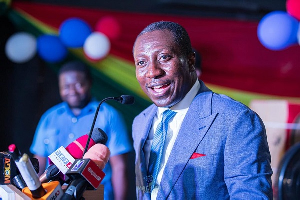During the inauguration and open enrollment conference of Corruption and Fraud Audit Consortium (CAFAC) we delivered a 5 point plan that included as one of its tenets the use of fraud and corruption auditing as critical tools in the fight against fraud and corruption in Ghana. In this article we explore the process of corruption auditing.
Because it is a relatively new phenomenon, there isn’t a standard definition for corruption auditing. However by relying extensively on the work of Muhammed Akram Khan, UN resident auditor in Sudan in his book titled “A practitioner’s guide to corruption auditing” we can put forward a description of corruption auditing to guide us in its introduction to the Ghanaian political accountability landscape.
Corruption auditing has very little to do with documentation and records because corruption leaves behind little or no audit trail – sometimes it takes place with as much as a smile, a wink or even a handshake – so corruption audit is seriously built on circumstantial evidence, tip offs and whistleblower reports. Investigations and interviews are a mainstay in corruption audits and self confessions play a key role. Soliciting the feedback of the recipients of services with suspected corruption also helps. This is known as participatory auditing.
Corruption auditing is a relatively new phenomenon and therefore has not been given any considerable exposure in the intellectual and professional landscape. Some genesis of work has already been done but it has not gathered sufficient momentum. For example the United Nations Office of Drug Control and Crime Prevention, Vienna, is spearheading the campaign against corruption. It has published a wealth of literature on corruption, including an Anti-Corruption Tool-Kit in its Manual on Anti-Corruption Policy. It has identified thirty tools for fighting corruption. However, auditing is not even part of this list. The Manual does devote, though, one page to auditing at a later stage.
The INTOSAI Journal of Government Auditing, the most prestigious publication of the world government auditors, has so far published very few if any articles on corruption auditing. There seems to be a general neglect of corruption auditing in the methodology tool-kit of the auditing profession and it is hoped that this article will provide a road map for the Ghanaian auditors who will be faced with the challenge of implementing this new regime of corruption auditing.
A logical question for such a new phenomenon is what will be the methodology as we attempt to implement it in Ghana?
CORRUPTION AUDIT PROCESS
Objective in Corruption Auditing
As a starting point for corruption auditing, the auditors should hold on to the traditional assumptions about the behavior of the staff with respect to organization’s business and should not commence audit planning with the suspicion of corruption. However, at the stage of familiarization of the organization and its operations, they should remain alert to the opportunities for corruption. Therefore, they should proceed cautiously. In the process of normal audit planning, they should try to determine the possibilities of corruption through review of departmental laws, regulations, rules and procedures. Besides, in the process of interviews of key personnel, they should identify any opportunities for corruption. The audit plan can state the audit objective of corruption audit, besides other audit objectives, as follows: One of the objectives of this audit is to assess the opportunities of corruption in … (name the function/ or operation under audit) of the … (name) the organization and to evaluate the efficacy of the existing control environment in preventing it.
Planning for Corruption Audit
The corruption audit planning process would also pass through the familiar audit planning stages. However, it will have some specific features as discussed below. The full range plan for corruption audit would involve the following steps:
(a) Knowing the Audit Entity
(b) Developing the Audit Criteria
(c) Building Inventory of Corruption Opportunities
(d) Applying Corruption Opportunity Test (COT)
(e) Writing the Audit Plan
Knowing the Audit Entity
The familiarization process will start with a detailed review of applicable laws, regulations, rules and operational standards with a view to understanding the audit entity and its operations. It would enable the auditors to understand the mandate, mission, objectives and main operations of the organization. It will also inform the auditors about the organization’s structure, staffing, locations, clientele and operational plans. While doing so, the auditors will remain alert to the identification
of possible opportunities for corruption.
Developing the Audit Criteria
The audit criteria for corruption audit should be developed in the light of good management practices accepted in the field of operation under audit. The auditors should familiarize themselves with the lead practices in the field through study of various manuals and background literature on the subject. The audit criteria, as the term itself specifies, acts as a benchmark to see if the systems and procedures comply with them. Any gap between the criteria and the actual systems and procedures, indicates possibilities of corruption. For developing the audit criteria, the auditors should keep in view the applicable laws, rules, procedures, and controls in respect of each operation under review and ask the following question; For managing this operation (…name the operation), what should the management do to make sure that the operation is performed honestly, economically, efficiently and effectively? An answer to this question would help the auditors develop the audit criteria as they proceed further from one segment of the client operations to the other.
Opinions of Tuesday, 12 March 2013
Columnist: Boham, Hector O.


















